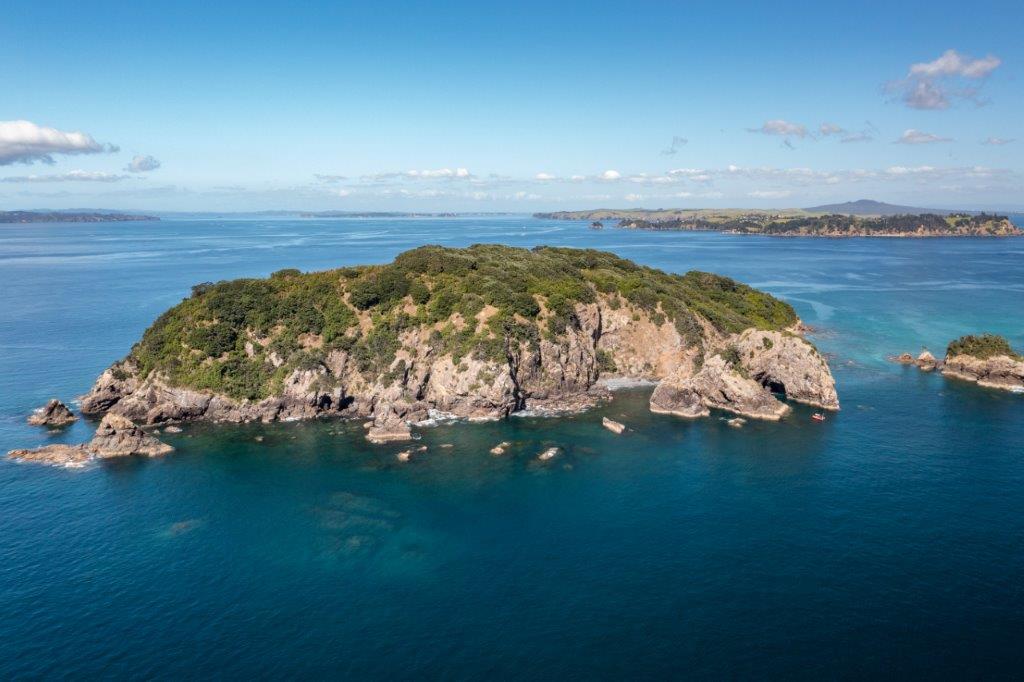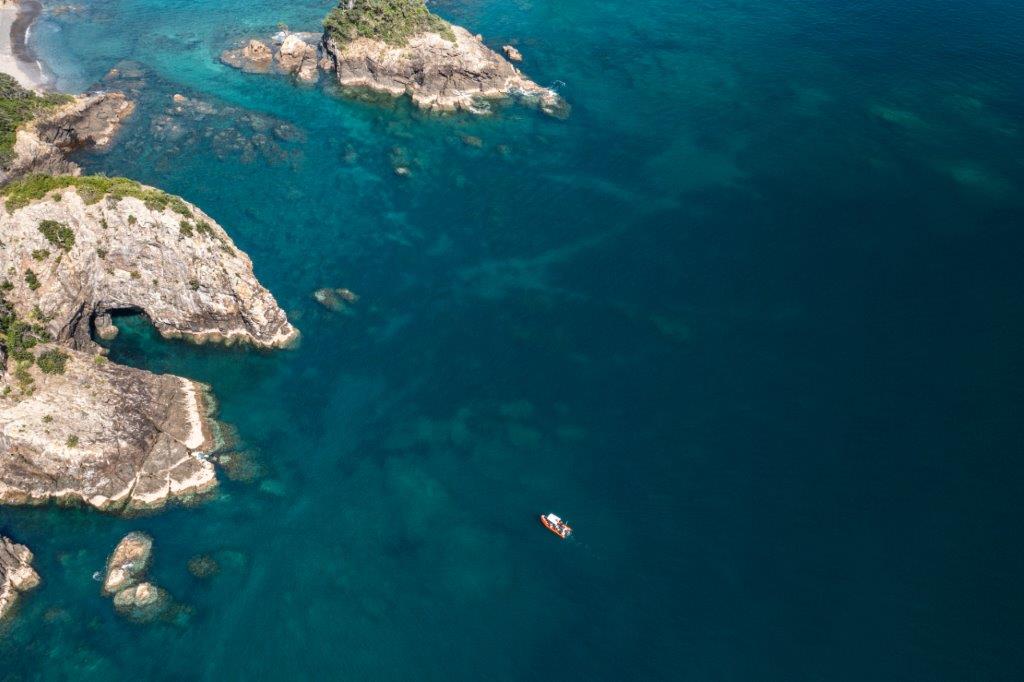The Noises hold a very special interest for seabird lovers. Being home to at least…
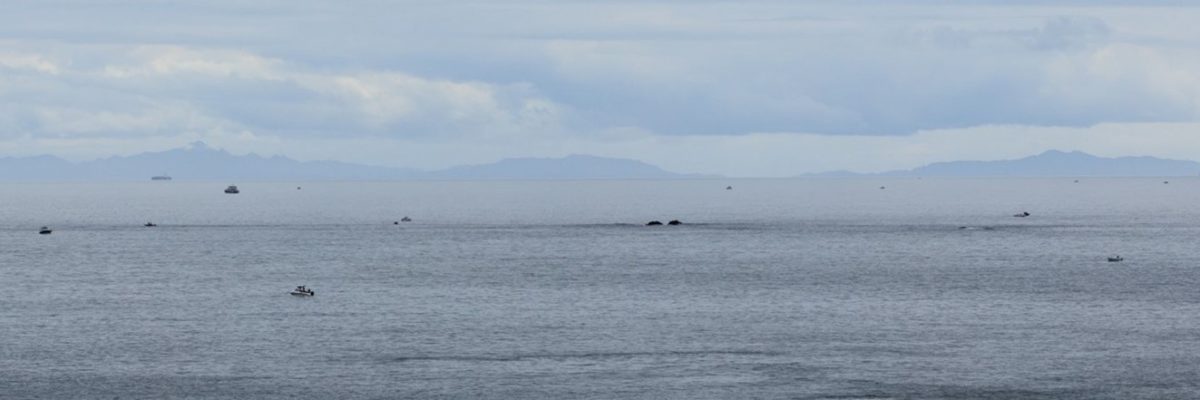
The Noises secret fishing spot, an informal census.
The Noises has long been a popular fishing spot for Aucklanders and I first ventured there as a teenager in the early 1990s. Mum and dad helped me buy my first boat when I was still at school – a 12ft Parker craft with a 15 hp Mercury outboard – me and my mates would go all around the gulf, camping and fishing, it was choice. We had a legendary “secret spot”; shallow water reef with blue-green water breaking in the swells, fringed in waving green-brown seaweed – it always produced a snapper or two.
A long trip in a small dinghy, the place always felt isolated, wild, unspoiled and we believed that no one else knew of our secret possie. I still fish the gulf, but as a scientist working on its waters, I’ve become less interested in taking and more concerned with addressing the catastrophic impacts we are having on this place we love. One issue fishers need to consider is our collective impact on the marine environment. I decided to take the opportunity presented by a recent research field trip to Maria/Ruapuke Island in The Noises group, to conduct an informal census of fishing activity.
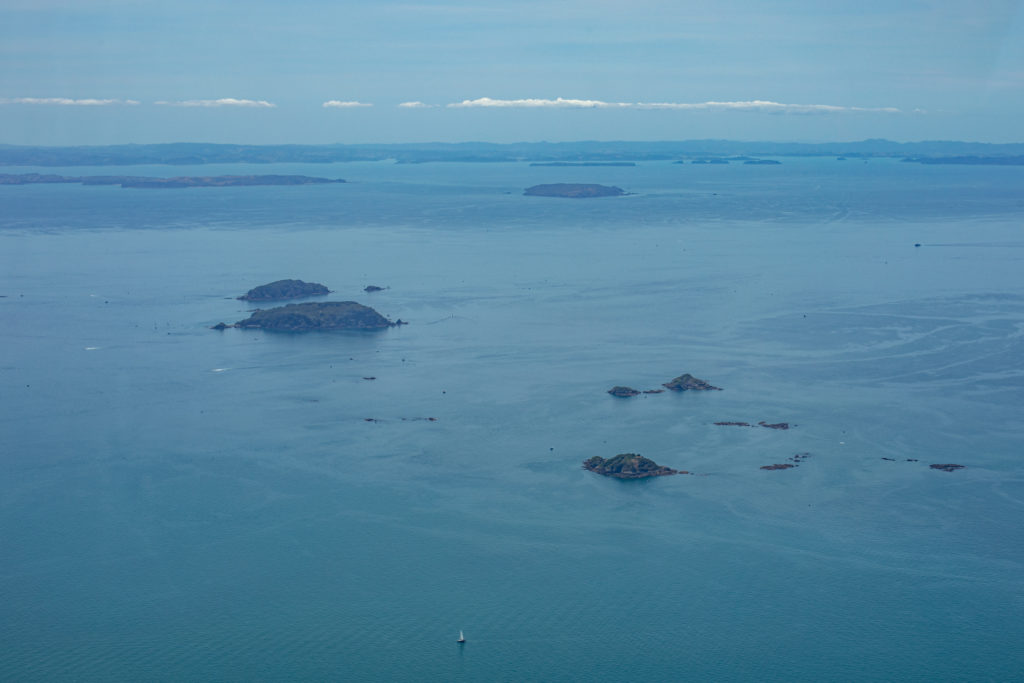
Maria is a small 2-hectare island in the eastern Noises chain and the third largest of the group after Ōtata and Motuhoropapa. The island is a seabird hotspot with at least 4 species which were the focus of our three-day research trip. Importantly Maria offers a 360-degree view of The Noises including the “secret spot” several hundred metres to the west. Using binoculars, I was able to make two hourly counts of the number of boats fishing in a cool midweek spring Wednesday and include an unofficial extract from this field biologist notebook…
“13th October, Maria Island, late-night chasing seabirds, 3 hours sleep, sleep broken by high pitched whine of outboard motors at 05:55……no they are jet skis aren’t they?…..at least 2…….
“08:00: finally got up to do a count, constant boat noise for last few hours. Total fishing vessels in sight 23, number of vessels on the secret spot 2.”
A striking number of boats for a Wednesday morning. But what makes The Noises such an attractive spot for fishing? Well, it ultimately comes down to the uniquely complex marine habitats in this region of the Hauraki Gulf. The Noises are a diverse range of islands, rocky reefs, soft sediment and biogenic habitats all swept by nutrient-rich currents that flow between the inner and outer gulf. These currents run headlong into the reefs of The Noises and fire up the marine biodiversity; gardens of seaweeds and sponges, shellfish beds, and abundant marine invertebrate communities. At least 26 species of fishes have been documented and naturally popular table fish such as snapper, kahawai, and kingfish are a draw for fishos.
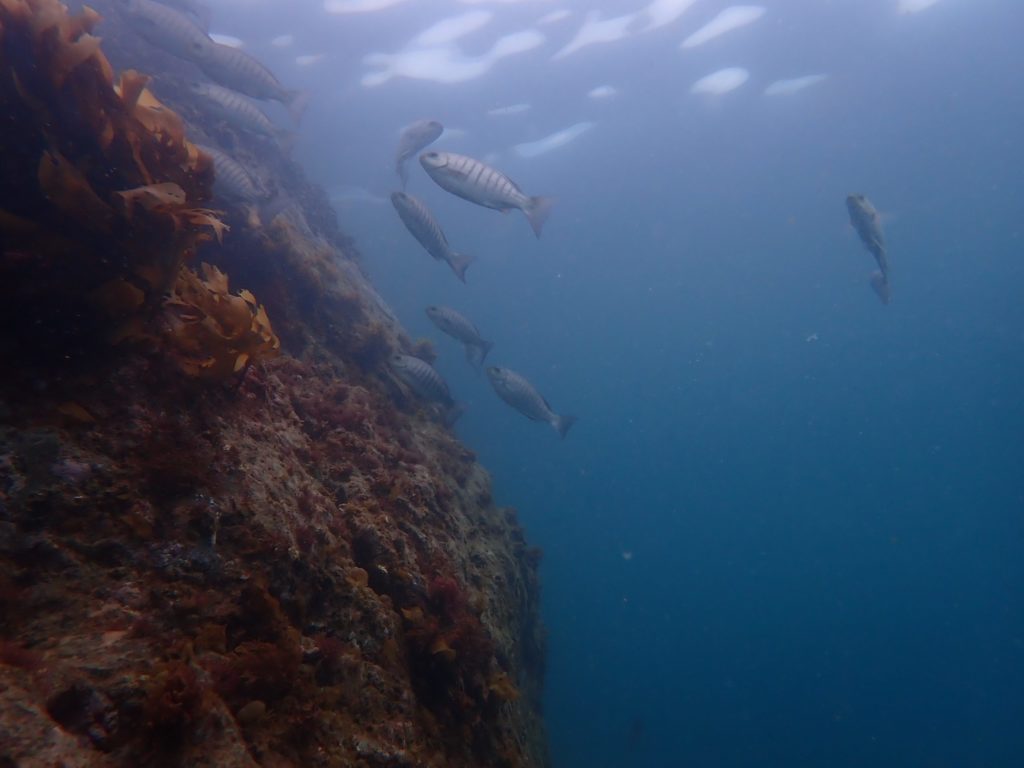
“10 am: total boats fishing in sight 26, vessels on secret spot 3.”
With the growing wealth of Aucklanders, and despite the price of petrol, once relatively isolated places like the Noises are now under near constant fishing pressure by modern boats, with modern GPS-based fish finders leaving no reef, rock outcrop or secret spot untouched. And this fleet of boats is swelling as the city grows. In 1970 there were around 30,000 boats in Auckland, in 2012 that number has swelled to 130,000 and is predicted to hit 180,000 by 2040. Naturally, with more boats and hooks in the water, we are taking more and more of the children of Tangaroa from the ocean. In the Hauraki Gulf, the average recreational snapper catch has almost tripled in the past thirty years and now exceeds the allowable commercial fishing harvest. The average recreational kahawai catch has more than quadrupled.

“12:00: total boats fishing in sight 17, secret spot 1 boat, snorkeller in the water collecting mussels”
We have a problem fellow fishos; our love for fishing the gulf is destroying what is truly wondrous about it, the abundance, the life force or mauri. That snorkeller in the water over there will be swimming over bare patches of rock, interspersed with worn tattered clumps of Ecklonia seaweed. It’s mostly gone, eaten out by roving hordes of Kina, spiny urchins that have exploded in abundance due to the absence of their main predators, large crayfish and large snapper. We’ve eaten those, dragged them out of the water on lines or pulled them from their underwater crevices taking them for our dated (in my opinion) grip and grin photos, setting off what ecologists call a trophic cascade – a powerful indirect interaction that can control and bring entire ecosystems to ruin.
2 pm total boats fishing in sight 16, secret spot 1 boat, at least one sack of mussels collected
Jenga is a game of skill where each player takes a turn removing one block from a tower made up of 54 pieces. I’m crap at it personally but it’s a good analogy for our Hauraki Gulf ecosystems in crisis. Together the components of the tower, like an ecosystem, are strong and resilient. But start removing blocks and the whole system weakens, piece by piece, snapper here, crayfish there, remove some blocks and there is not much apparent impact, others and part of the structure collapses into a Kina barren. Piece by piece we have been attacking our beautiful Hauraki Gulf Jenga tower from all sides, and issues at The Noises are symptomatic of the whole gulf. The loss of large snapper and crayfish, the recent destruction of once abundant scallop beds and now in their absence people’s attention are turning to the mussels, themselves a vital habitat supporting marine diversity. We are literally fishing our way down the food web and currently, it feels like a race to the bottom.
4 pm total boats fishing in sight 10, secret spot 0
Whew, the secret spot finally gets a break from the “tragedy of the commons”… In his recent NZ Geographic article James Frankham does a brilliant job of outlining the phenomenon in the destruction of our marine environment – that unfortunate human tendency, when resources are shared, to continue acting in our own self-interest until we stare at an ecosystem in collapse. “Have we all been aware of this impact, and cynically fishing all the while, just because other people are? Or have we been sleep walking towards the oblivion of a shared resource we all value?” I think mostly the latter James and it’s time we woke up.
6 pm total boats fishing in sight 17 boats, secret spot 2
The data are in and the conclusions of my survey…. there are no secret spots, our fishing impact is constant and growing, but so is our awareness of the issues. At The Noises, a unique project partnership is joining a growing public outcry for change in our protection of the gulf. The science is clear, we need to protect whole marine ecosystems at sufficient scale to buffer our growing impacts on the marine environment, we need to do a better job of managing the fish stocks we love to catch but remember it’s not just these species that are important and we need to take responsibility for this resource for our kids and grand-kids. Luckily the government is slowly listening and has recently released a package of proposed measures to revitalise the gulf including high protection marine areas and seabed protection zones for the gulf. So get involved and have your say, the gulf is worth it.
Matt Rayner is the Curator of Land Vertebrates at Tāmaki Paenga Hira Auckland War Memorial Museum. Like the seabirds he studies, he’s a regular visitor to The Noises.


